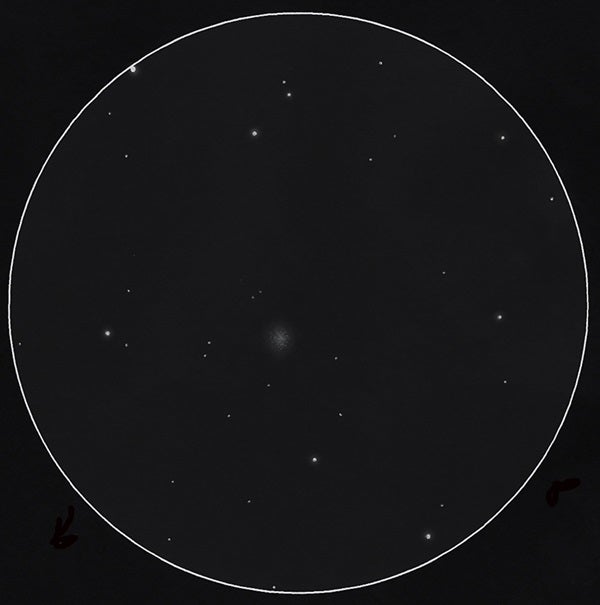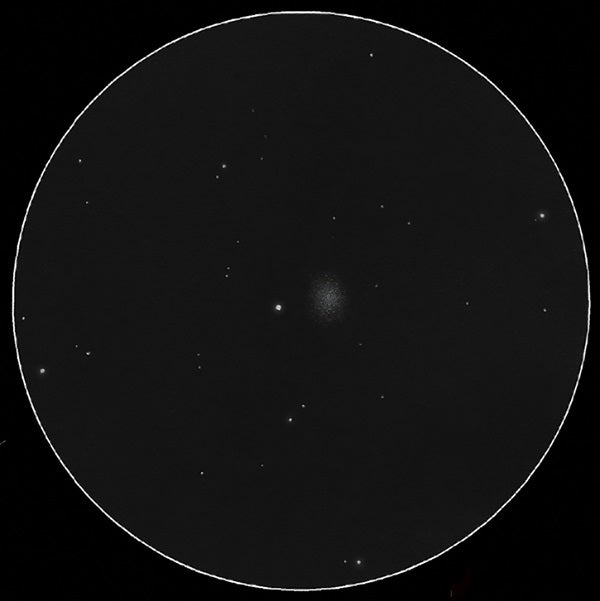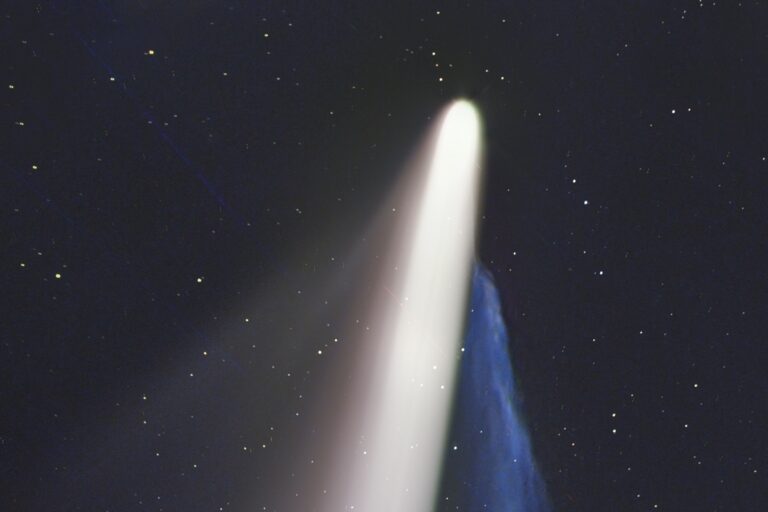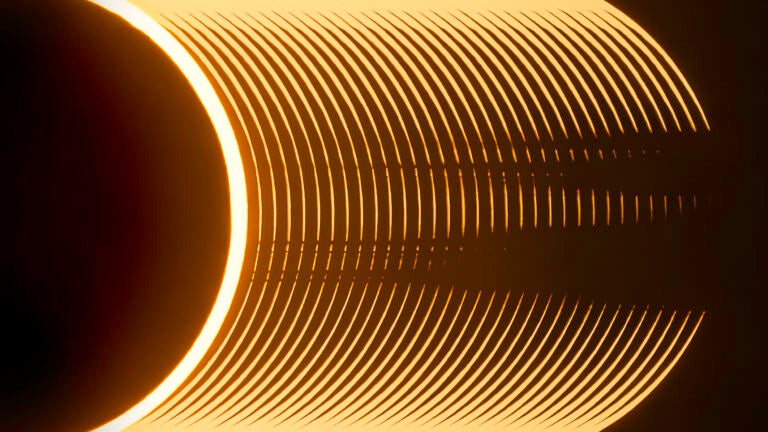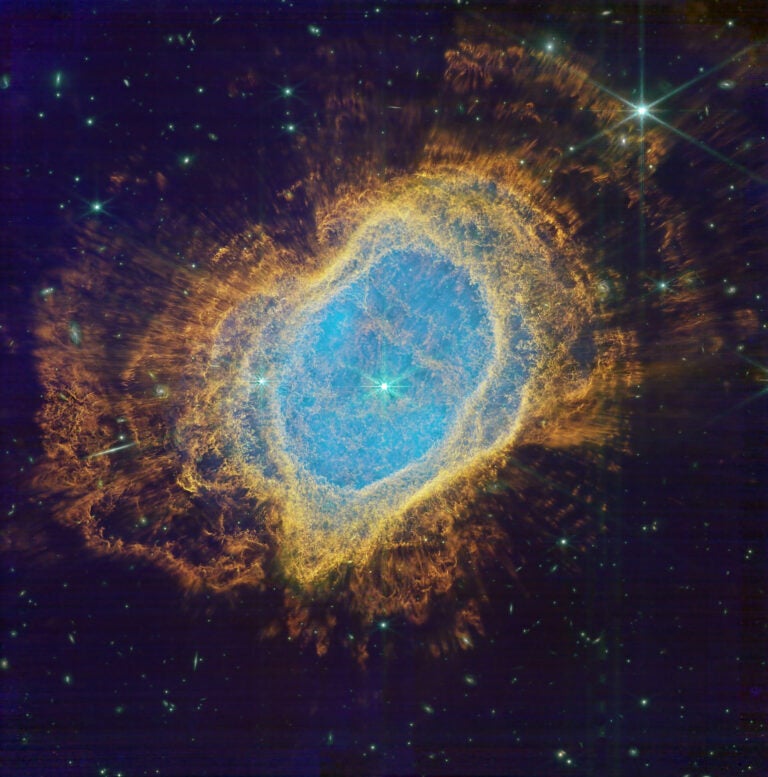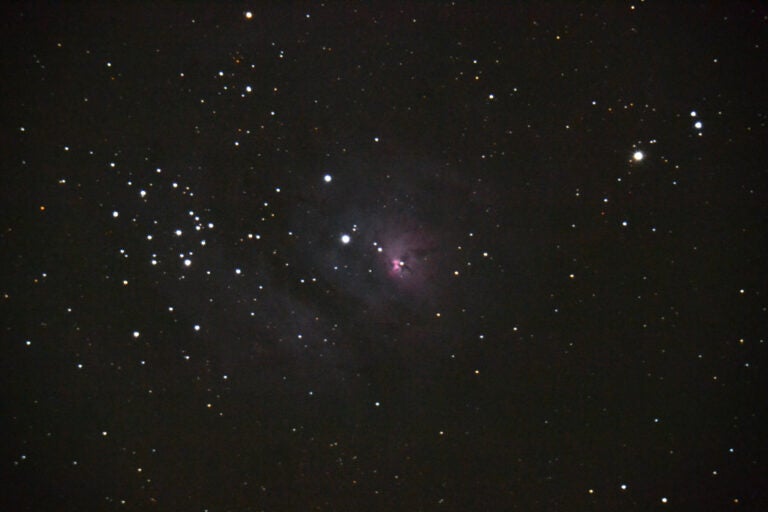While sketching, you employ the chamois-like blunt tip of a blending stump to render the cluster’s soft glow. A tortillon’s firm, sharp tip, on the other hand, is ideal for stippling the unresolved stars within it. Stippling is a type of shading that uses small dots. To stipple, lightly touch or tap the tortillon to the paper as many times as necessary to produce the effect you want. I’ll demonstrate by looking at two attractive globulars in the constellation Delphinus the Dolphin.
Our first target, NGC 7006, is part of the Milky Way’s outer halo. At 135,000 light-years away, it’s one of our galaxy’s most distant globular clusters.
To find it, point your telescope 3.5° east of the 4th-magnitude double star Gamma (γ) Delphini. NGC 7006 glows at magnitude 10.6 and has a modest diameter of 2.6′.
Through a 4-inch telescope at low power, the cluster looks faint and unresolved, resembling a planetary nebula. A 10-inch scope reveals central brightening with a soft, symmetrical outer glow. The core appears mottled, still with lots of unresolved stars, when you view through a 16-inch scope at 150x.
After rendering the cluster’s glow with a blending stump, rub the tip of a 3/16-inch (5mm) tortillon through a patch of graphite you’ve created outside your sketch circle. Hold the graphite-loaded tortillon upright over the sketch, and gently stipple the unresolved stars starting at the cluster’s center. Adjust the pressure as needed for brightness.
Our second target is a cluster that sports resolved stars. Drop 4° south of magnitude 4.0 Epsilon (ε) Delphini to locate NGC 6934. It’s much closer to Earth than NGC 7006 — a mere 50,000 light-years away. It shines at magnitude 8.8 and measures 7′ across. You’ll identify it easily by the magnitude 9.2 star positioned 2′ west of its center.
Because NGC 6934 has an intense spackling of both unresolved and resolved stars, you’ll want to build up the stippled layers with the tortillon before plotting the resolved stars with a graphite pencil.
Tortillons are available in several sizes, and they work well when you create detailed areas in your sketches. For the best results, sharpen and clean them often with a block of sandpaper, and practice your stippling technique before sketching live at the eyepiece.
Do you have a sketching question? Contact me at erikarix1@gmail.com.


